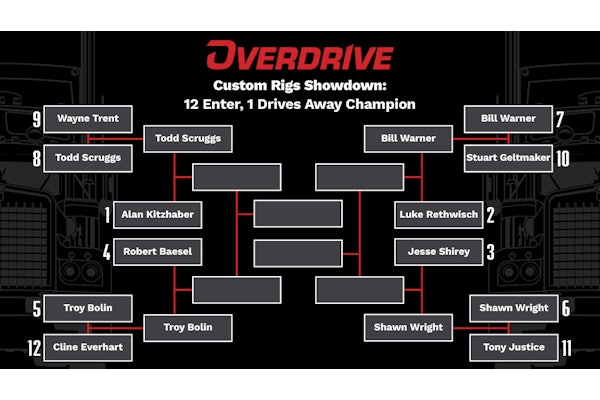 First Alert battery-powered CO detectors retail for around $20 at the Home Depot.
First Alert battery-powered CO detectors retail for around $20 at the Home Depot.We posted a question about using carbon monoxide detectors in truck cabs on the George & Wendy Show Facebook page a couple months ago, and the statement was made that diesel engines don’t produce enough CO to kill you — therefore, detectors inside the cabs weren’t necessary. I had never heard this before, so I did a little research and was really surprised at what I found.
There are two diametrically opposed camps on whether or not diesel fumes are CO-laden enough to kill human beings in an enclosed space. Believe it or not, the trucking industry didn’t have much to do with the most comprehensive studies performed, or the science behind it. A man named Berg wrote an essay declaring it impossible to kill humans in the manner the SS was accused of – CO poisoning through the use of giant diesel engines. As you can imagine, this brought about a huge fervor, and many studies were initiated to disprove Berg’s essay, which was written in 1983, so a great deal of the current information we have about the effects stemmed from these studies.
 This story’s author, Wendy Parker, writes the George & Wendy Show blog, appearing several times a week on OverdriveOnline.com, dispatched from her ridealong position in the truck (though not this particular one) with her owner-operator husband, George.
This story’s author, Wendy Parker, writes the George & Wendy Show blog, appearing several times a week on OverdriveOnline.com, dispatched from her ridealong position in the truck (though not this particular one) with her owner-operator husband, George.Carbon monoxide poisoning has been carefully examined since the 1920s, when the concern for ventilation requirements became an issue, particularly for the New York City metropolitan area and the Holland Tunnel. In the early 1940s, research by Yandell Henderson and J.S. Haldane revealed that an average carbon monoxide concentration of 0.4 percent and above is lethal to human beings after less than one hour of exposure.

Diesel engines run by creating pressure and don’t require the actual spark gasoline engines do; they are also able to process the fuel more efficiently, therefore releasing much lower levels of CO than gasoline engines. A study in 1941, by Holtz and Elliott, found that when a diesel engine was run within the manufacturer’s specifications for fuel efficiency it produced only a small amount of carbon monoxide, not enough to be quickly lethal. However, when the fuel pump was adjusted so that it injected more fuel the carbon monoxide content in the exhaust rose to 0.6 percent. This is a lethal amount.
There are many documented cases of lethal CO events involving diesel engines, and probably more cases that are undocumented, or misdiagnosed. When studies are tasked to gather actual numbers of death by CO intoxication specifically from a diesel engine, the information is often not specified on death certificates, or autopsy reports.
While it’s difficult to gather concise numbers, it’s absolutely certain every diesel engine out there is not running to or tuned exactly to manufacturer’s specifications. That being said, there is most definitely a risk of CO poisoning in the enclosed cab of an idling diesel, especially one with exhaust leaks or issues, which again are often present when the engine is not running perfectly.
Headache, nausea, and dizziness are the most common complaints of those experiencing higher than acceptable levels of CO. An interesting note is that people idling in warm, sunny places seem to have less instance of intoxication than those idling in a cool, rainy climate. The theory is that barometric pressure keeps the gas close, as the air pressure is heavier and harder to escape from.
Detectors range from $15 to $50 to purchase and can be easily installed in the cab of any truck. It’s recommended to install them lower – about head level when lying in the bunk. Give such an inexpensive piece of equipment, it really is better to be safe than sorry.














